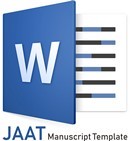The Impacts of Project Based Learning Method on the Basic Accounting Competencies
Analyzed Using Kirkpatrick's 4 Levels Model
DOI:
https://doi.org/10.30871/jaat.v7i2.4354Keywords:
Accounting, Competency, Kirkpatrick Model, Project Based LearningAbstract
Project Based Learning (PBL) is an instructional approach that involves students dealing with their problems by practicing in the field. The PBL is one of the choices of current learning methods in almost all scientific fields, including accounting. Based on the previous research, the PBL will only increase social value and soft skills, not basic accounting knowledge. The policy of implementing PBL in introductory courses is a complicated matter to the consequences of achievement in the essential accounting competencies. This descriptive quantitative research aims to evaluate the effectiveness of the application of PBL in introductory accounting courses for first's year students by using Kirkpatrick's four levels evaluation model. Respondents consisted of 3 subjects in PBL those are of 155 students, five teaching lecturers, and 11 clients. This model includes the evaluation on four levels: reaction, learning, impact, and outcome. This research resulted in exciting findings, namely that the PBL provides more experience in soft skills (human literacy, technological literacy, data literacy) and critical thinking patterns rather than increasing the achievement of the essential accounting competencies. The suggestion that can be given is that the PBL should be applied to subjects with achievements beyond the essential competencies, in which the first year is crucial to equip students with basic accounting knowledge. Basic knowledge becomes the foundation for the following year's course level, so it must be prepared wisely.
Downloads
Downloads
Published
How to Cite
Issue
Section
License
Copyright (c) 2022 Alfonsa Dian Sumarna, Diah Amalia

This work is licensed under a Creative Commons Attribution-ShareAlike 4.0 International License.










